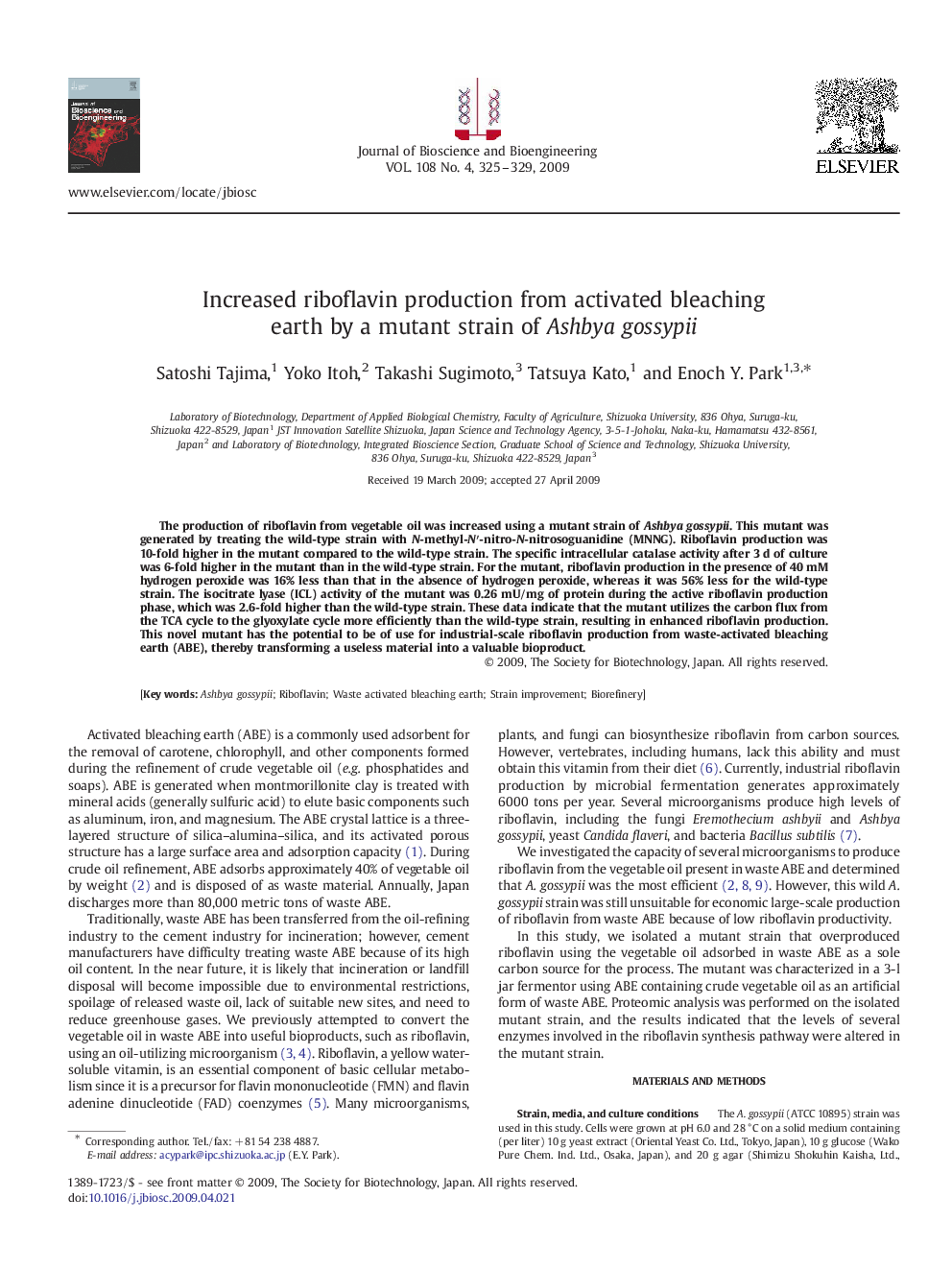| Article ID | Journal | Published Year | Pages | File Type |
|---|---|---|---|---|
| 21695 | Journal of Bioscience and Bioengineering | 2009 | 5 Pages |
The production of riboflavin from vegetable oil was increased using a mutant strain of Ashbya gossypii. This mutant was generated by treating the wild-type strain with N-methyl-N′-nitro-N-nitrosoguanidine (MNNG). Riboflavin production was 10-fold higher in the mutant compared to the wild-type strain. The specific intracellular catalase activity after 3 d of culture was 6-fold higher in the mutant than in the wild-type strain. For the mutant, riboflavin production in the presence of 40 mM hydrogen peroxide was 16% less than that in the absence of hydrogen peroxide, whereas it was 56% less for the wild-type strain. The isocitrate lyase (ICL) activity of the mutant was 0.26 mU/mg of protein during the active riboflavin production phase, which was 2.6-fold higher than the wild-type strain. These data indicate that the mutant utilizes the carbon flux from the TCA cycle to the glyoxylate cycle more efficiently than the wild-type strain, resulting in enhanced riboflavin production. This novel mutant has the potential to be of use for industrial-scale riboflavin production from waste-activated bleaching earth (ABE), thereby transforming a useless material into a valuable bioproduct.
